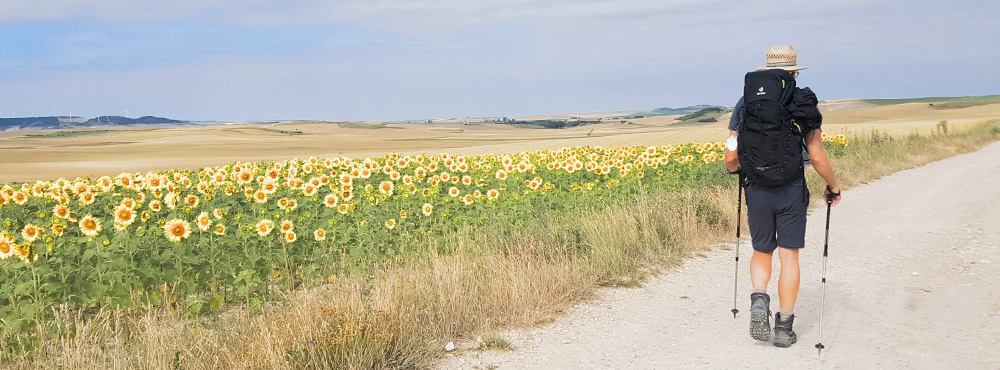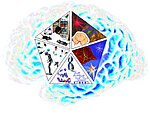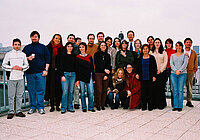Refinement of the SPG5 locus and identification of candidate genes and mutations in SPG5- and SPG30-positive families
Applicant:
Stephan Klebe, Dr. med. INSERM U 679 Hôpital de la Salpêtrière 75013 Paris/France E-mail: klebe@ccr.jussieu.fr
The hereditary spastic paraplegias (HSPs) are a clinically and genetically heterogeneous group of neurodegenerative diseases characterised by progressive spasticity in the lower limbs.
Less is known about autosomal recessive forms (ARHSP) since the mapped loci have been identified in few, often single, families and account for only a small percent of patients. After identification of the first ARHSP locus on chromosome 8q12 additional loci were identified and 3 responsible genes.
In contrast to the autosomal dominant HSP forms most of the patients with ARHSP have complex forms of the disease which are associated with neurological and extra-neurological signs such as cerebellar ataxia, dysarthria, mental retardation, peripheral neuropathy, optic atrophy, retinitis pigmentosa, hearing loss or thin corpus callosum.
The main aim of the proposed project is the identification of new genes responsible for two forms of ARHSP. SPG5 and the recently identified SPG30. The project will consist of the following:
- Identification of additional SPG5- and SPG30-positive families with autosomal recessive transmission
- Refinement of the SPG5 and SPG30 interval via linkage analysis
- Identification of candidate genes in the refined intervals
- Direct sequencing of candidate genes and mutations
- Confirmation of putative new mutations
We have already found a potential missense mutation in a candidate gene in the SPG30 locus by direct sequencing. The amino acid affected by the mutation is highly conserved among mammals. The genomic variant was found only in affected members of the SPG30-positive families.
We will follow two strategies to prove that this variant is a mutation rather than a genomic variant. First we will perform linkage analysis on families with phenotypes resembling those of known SPG30-positive families for association with the SPG30 locus. In the new SPG30 families the candidate gene will be sequenced directly. In addition, consanguineous families that are to small to calculate a “lod score”, will be selected according to their phenotype. In these families a homozygosity for microsatellites in the candidate region will be searched for followed by direct sequencing of the gene.
We believe that the candidate protein is potentially involved in ARHSP because of its role in molecular trafficking, a function already thought to be impaired in other types of ARHSP. We intend to develop cellular models showing the pathological consequences of the mutant protein. The wildtype and mutant proteins will be overexpressed and their effects compared, using methods established in our laboratory. These experiments will contribute to our understanding of the pathological effects of the potential missense mutation.
For the SPG5 locus we have refined the candidate interval by identifying new linked families. The candidate interval of 12.4 centimorgans contains approximately 60 different genes. More linked families will further reduce the number of candidate genes. Parallel to the reduction of the region, we will begin to analyze candidate genes in the known interval. Special attention will be paid to genes that are strongly expressed in the nervous system and are involved in molecular trafficking and/or mitochondrial metabolism. These candidate genes will be directly sequenced to identify new mutations.
In addition to these molecular and pathophysiological studies we will determine, in detail, the phenotype of SPG5 and SPG30 patients, in collaboration with the Human Genetics Department of the Sâlpetrière Hospital in Paris.
The proposed molecular, pathophysiological and clinical studies will contribute to our understanding of the illness.
Final report
Thirty-three different loci for hereditary spastic paraplegias (HSP) have been mapped, and 14 responsible genes have been identified. Autosomal recessive spastic paraplegias (ARHSPs) usually have clinically complex phenotypes but the SPG5, SPG24 and SPG28 loci are considered to be associated with pure forms of the disease.
We performed a genome-wide scan in a large French family. Fine mapping of the refined SPG5 region on chromosome 8q12 was performed in another 17 ARHSP families with additional microsatellite markers.
After exclusion of known ARHSP loci the genome-wide screen provided evidence of linkage with a maximal multipoint lod score of 2.6 in the D8S1113-D8S1699 interval. This interval partially overlapped SPG5 and reduced it to a 5.9 megabase (Mb)-region between D8S1113 and D8S544. In a family of Algerian origin from a series of 17 other ARHSP kindreds, linkage to the SPG5 locus was supported by a multipoint lod score of 2.3.
The direct sequencing of the coding exons of seven candidate genes did not detect mutations/polymorphisms in the index cases of both linked families.
The phenotype of the two SPG5-linked families consisted of spastic paraparesis associated with deep sensory loss. In several patients with long disease durations, there were also mild cerebellar signs.
The frequency of SPG5 was ~10% (2/18) in our series of ARHSP families with pure or complex forms. We have refined the SPG5 locus to a 3.8 cM interval and extended the phenotype of this form of ARHSP to include slight cerebellar signs.
SPG30:
Regarding the recently identified locus SPG30 on chromosome 2q37 we analysed different candidate genes by bioinformatical resources and direct sequencing.
In one of the candidate genes a nucleotid substitution was found resulting in an amino acid change. The particular variant was found in a highly conserved region of the protein in different mammalian species. The gene participates, as many other proteins involved in HSP, in axonal trafficking. Afterwards linkage analyses of 32 consanguine and non consanguine ARHSP families were performed to find more families linked to the SPG30 locus and to confirm the variant in the putative responsible gene. Unfortunately no further family could be linked to the SPG30 locus.
Approximately 500 healthy controls with different ethnic background (Caucasian, Indian and African) were analysed for the gene variant to exclude a rare polymorphism. None of theses specimens showed the gene variant.
In collaboration with other laboratories further studies with functional essays are planed to show a difference between the wild type protein and the found variant.





